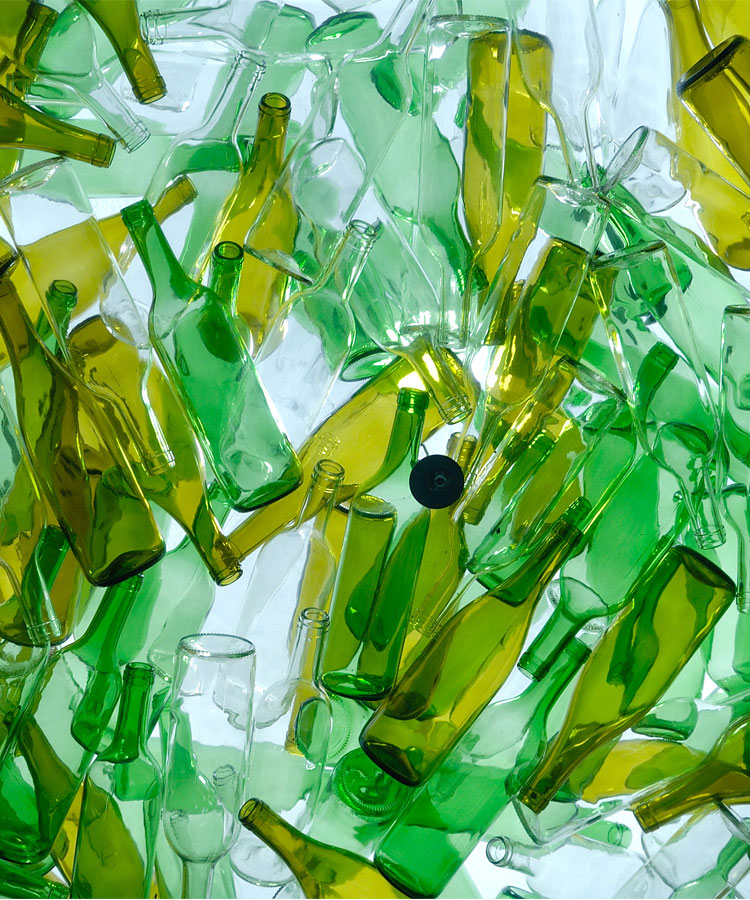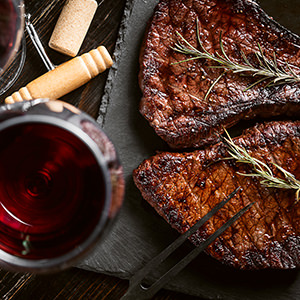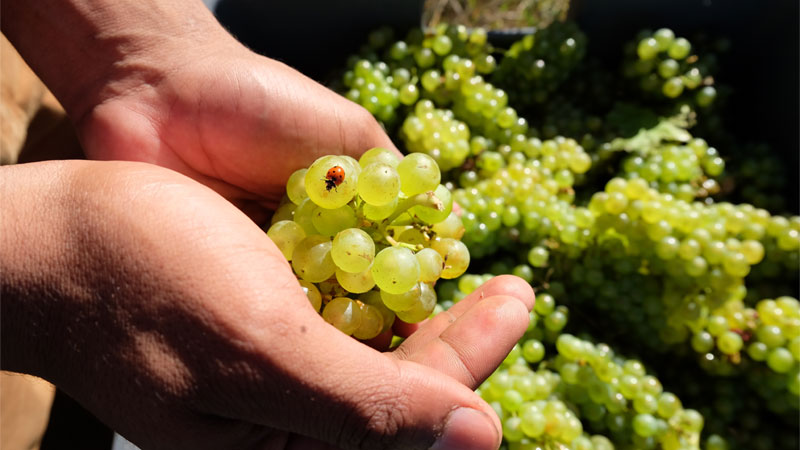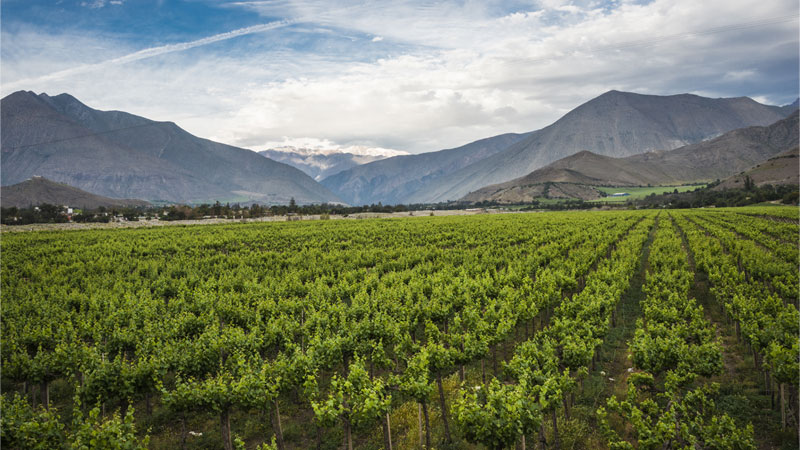
The Hollywood version of vineyards and winemaking — pristine green rolling hills of vines, brand new tractors, and rugged hands — often erases the truth about wine as an agricultural proposition. The reality is that wine production can have a big impact on its surrounding ecosystem and the people who live nearby. And while we grapple with adapting to a rapidly changing climate, sustainability has thankfully become less an outlier theory and more part of the mainstream conversation in wine.
For those looking for something to drink that is both delicious and aligns with modern values, the best bet is to find a bottle from a place that’s making impressive strides in sustainability, namely Chile.
The geography of the 2,700-mile-long Chile provides a nearly perfect landscape for growing grapes. Sandwiched by the Pacific and the Andes, cool air comes down from the mountains, fog rolls in from the ocean, and a variation of high temperatures during the day and cool nights makes for vibrant, well-structured, intensely flavorful grapes.
Chileans have long prided themselves on making top-quality wines, but in 2011 a group of 14 producers took that mission even further when they applied for and achieved certification for the Sustainability Code seal.
The first program in the country to measure sustainability, the 14 vineyards were put through a rigorous assessment in order to be certified Sustainable by Wines of Chile, a nonprofit union representing winemakers in the country, dedicated to the promotion and innovation of Chilean wine.
Broadly speaking, the code aims to go farther and deeper in assessing the environmental impact of wine. All aspects of the process are taken into account in order to ensure each producer is doing the maximum to provide accountability, transparency, education, and leadership while constantly working to reduce its carbon footprint. In essence, the code evaluates and rewards those vintners for their holistic approach to the craft of winemaking and to the environment.
Looking at sustainability from the ground up, this certification reframes winemaking as less a business venture and more responsible ecosystem management. Chile has installed 33 meteorological stations throughout vineyards to more closely monitor the weather and climate patterns in the different regions. And, though not a requirement, some producers have gone as far as implementing biodynamic practices into their grape growing.
For the Sustainability Code, producers are evaluated in three major categories, all with corresponding colors: green for the vineyard; red for the winery; orange for the social aspect (business practices of the company as a whole). And as a bonus, purple, applicable to the producer, pertains to wine tourism. Each winery must undergo re-evaluation every two years to maintain its certification.
As of today, there are 76 vineyards certified under the Sustainability Code. So the next time you’re buying online or masked up and wandering around the wine shop, make a beeline for the Chilean section and look for the seal.
You’ll not only be drinking some of the best-quality wine in the world, you’ll be supporting those like-minded winemakers who have gone to great lengths to keep their products and business practices as good for the environment and as positive for their employees as possible.
To better understand Wines of Chile’s approach, here’s a quick breakdown of the Sustainability Code guidelines:
Vineyard
This area evaluates items such as the vineyard management plan for natural resources, soil analysis and management, water, and energy use efficiency. It also ensures toxic herbicides are prohibited, safety materials and sustainability education are available for employees, and biodiversity is promoted within the vineyard. Veramonte, with vineyards in Casablanca and Colchagua, has integrated husbandry, using sheep as a means of maintaining the grounds as well as giving habitat breaks for animals to balance the ecosystem and provide natural pest control.
Winery & Bottling Plant
The red section monitors the producers’ waste management plans, diagnostic plans and analysis for energy use and air conditioning capabilities, water usage, comprehensive tracking of liquid waste, hazardous waste disposal, and impact from bottling and packaging. In 2008, producer Viňa Ventisquero was the first to use a lighter-weight bottle, which has since become common practice. Another example is VIK wines, which uses state-of-the-art technology, free cooling, solar power, and natural insulation to reduce its carbon footprint.
Social
Of the 346 rules that winemakers need to follow for certification, 113 of them fall under social practices. The orange area ensures winemakers are following a code of ethics in their business practices, that child labor and forced labor are prohibited, there is no discrimination within the company, valid employment contracts are used that meet minimum legislation for labor and salary, and that strict safety protocols and continuing education are provided for all workers. The transparency and commitment to the ethics code has been a breath of fresh air in an industry where labor exploitation has gone under the radar. Viu Manent in Colchagua Valley, for example, published its code of conduct that’s easily available on its website. Viña San Pedro has created Tayú, a sub-line of the 1865 wine line. The bottle label of Tayú is the result of a collaboration between the Mapuche indigenous community and the winery. The artwork represents the essence of the community as well as the Mapuche legacy and their close bond with the land.
Wine Tourism
Wines of Chile is currently the only sustainability program that takes tourism into account for certification. The environmental consequences of thousands of tourists visiting a wine region can be quite significant. So, when applicable, winemakers are evaluated on waste management, water, and energy use plans. Viu Manent offers various opportunities for visitors to experience the winery through tours, tastings, a restaurant, shops, and unique interactive activities. Santa Ema in the Maipo Valley provides education at the winery and on its website on another important rule for certification: responsible consumption, so visitors know just how much the impact of a bottle of wine has on both the environment and the body.
This article is sponsored by Wines of Chile. Love Wine, Love Chile.



